
Raspberries: planting, pruning and care
Contents
Raspberry plant, in a nutshell
- Raspberry plants are undershrubs of cool temperate climates that produce a profusion of fruit, raspberries, in June–July and in autumn for perpetual varieties.
- These deciduous, suckering bushes produce sparsely ramified stems 80 cm to 2 m high, bearing fine, not very sharp thorns unlike bramble, and can be trained.
- Plant regenerates through annual production of new canes; old, dying canes should be cut back to ground level or only at the tips, after harvest or in winter depending on whether variety is perpetual or not.
- Plant them in cool soil even in summer: light, rich in humus and not too calcareous; in sun or partial shade in the south.
A word from our expert
Raspberry is a cousin of brambles and wild roses as it belongs to the Rosaceae family. Wild raspberry occurs in temperate Europe and Asia where it favours cool lowland and mid‑mountain climates, in open areas or woodland.
Raspberry is a very fragile fruit that does not travel well and keeps poorly, which is why, being able to grow it in the garden is a blessing. This undershrub however has the drawback of constantly needing to renew its canes to fruit and of having a strong tendency to overflow the bed. But maintenance is ultimately quite simple since it is enough to remove dead parts (whole canes or just the top) and to thin out the number of new canes to obtain raspberries of a good size, very flavoursome, and to control its spread.
Raspberry bush needs consistently cool soil because its root system is shallow. A thick mulch of fallen leaves is a good way to keep soil cool while fertilising it.
Picking raspberries in the garden as they ripen is the best way to savour them, but it is understandable to want to enjoy them differently. Making coulis, sorbets and freezing fruit so you have them on hand to make tarts, pastries such as raspberry cake or mousses means you need to harvest fruit and keep it for at least a few days. Place raspberries in a basket covered with a cloth, without stacking them too much so as not to crush them, and keep them cool. By choosing varieties carefully, you will obtain a continuous harvest from June until the first frosts!
Botanical description
Botanical data
- Latin name Rubus idaeus
- Family Rosaceae
- Common name Raspberry
- Flowering from April to May and September
- Height between 1.5 to 2 m
- Exposure sun (not scorching) or partial shade
- Soil type any loose, fresh and well-drained soil, not too calcareous
- Hardiness Excellent (-30 °C)
Raspberry is a small fruit belonging to the family Rosaceae, like Strawberry, dog rose or Bramble (blackberry) which also bears the same genus name Rubus. The Rubus are bushes or climbing, deciduous or evergreen plants native to Eurasia. Some Rubus are valued for their ornamental qualities such as Rubus cockburnianus, with magnificent waxy white stems, or Rubus phoenicolasius whose shoots are covered in red hairs. Raspberry Rubus idaeus, cultivated mainly for its fruit, is a thorny bramble with bright green compound foliage quite decorative thanks to its pruinose underside. The species name idaeus refers in Latin to Mount Ida in Crete where raspberry grows naturally. It is also found in the Alps, Jura, Auvergne and many other European countries. Wild raspberry (Rubus idaeus) prefers cool climates where it can be encountered in mountain undergrowth, but also in lowlands, alongside elder, beech or rowan.
It is a deciduous bush with erect stems, forming a bush about 1.5 to 2 m in every direction over time. The biennial stems with reddish-brown bark die after fruiting but the plant continues to spread from its suckering stump, which produces new stems armed with small, not very sharp prickles each year.
Leaves bright green above, whitish-green and tomentose beneath are composed of 3 to 7 dentate leaflets and a petiole. They measure 10 to 15 cm long.
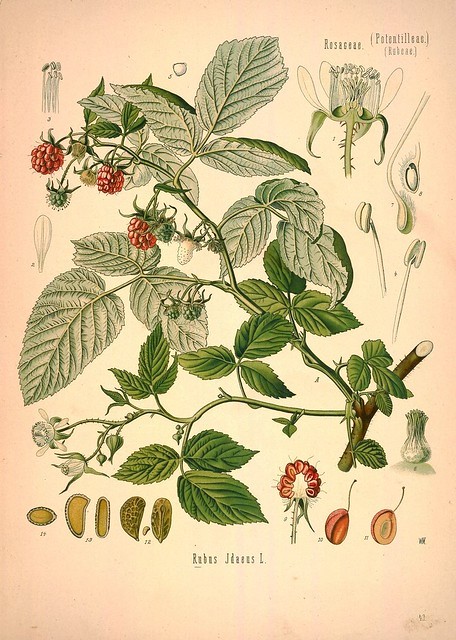
Rubus idaeus – botanical illustration
Flowering is very melliferous and consists of clusters of 10 to 12 white flowers, fairly small (0.5 to 1 cm diameter), not particularly decorative but highly attractive to insects. Flowers are borne at stem tips and then mid-cane in perpetual varieties. They are self-fertile, so there is no need to plant different varieties. Canes die after flowering at the end of their second year. Planting therefore requires dedicating a strip at least 50 cm wide and keeping a close eye to control suckers.
Fruits are small aggregated drupes, not adherent to the receptacle and which detach very easily at ripeness since generally only the edible fleshy part is picked. Brambles have an adherent receptacle, unlike raspberries.
Non-perpetual types produce raspberries from June to early August while perpetual varieties (also called “autumn” varieties) bear fruit first in September–October at the shoot tips and then in July of the following year on their lower parts before dying. It is however possible to concentrate production of perpetual varieties into a single period from August until first frosts by cutting back all canes in winter. Harvest then becomes single but larger. Production reaches normal level in the third year after planting. A plant can produce fruit for several years, about 10 years.
Raspberries are low in calories; they contain two particular sugars, levulose and fructose, and very little sucrose. Fruits also contain ellagic acid (a powerful antioxidant), tannic acid, vitamin C, and are a good source of potassium. It is also a medicinal plant whose young shoots and buds are used in gemmotherapy.
Read also
How to properly stake raspberry bushes?Main raspberry varieties
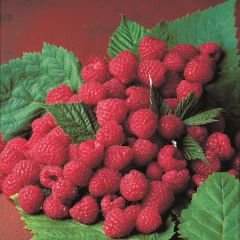
Raspberry Magnific Delbard- Rubus idaeus
- Flowering time June
- Height at maturity 1,20 m
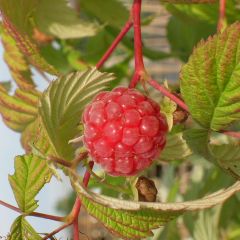
Raspberry Malling Promise- Rubus idaeus
- Flowering time May, June
- Height at maturity 1,50 m
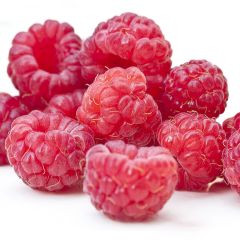
Raspberry Twotimer Sugana Red - Rubus idaeus
- Height at maturity 1,50 m
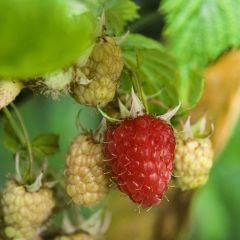
Raspberry Zeva Herfsternte - Rubus idaeus
- Height at maturity 1,50 m

Raspberry Blissy or Autumn Bliss (Everbearing) - Rubus ideaus
- Flowering time June to August
- Height at maturity 1,50 m
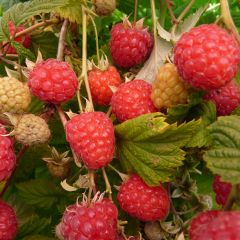
Raspberry Glen Ample- Rubus idaeus
- Flowering time June, July
- Height at maturity 1,50 m
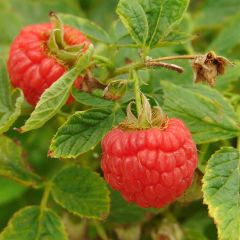
Raspberry Little Sweet Sister- Rubus idaeus
- Flowering time June, July
- Height at maturity 1 m
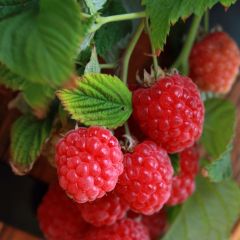
Raspberry Ruby Beauty- Rubus idaeus
- Flowering time June, July
- Height at maturity 90 cm
Discover other Raspberry plants
View all →Available in 0 sizes
Available in 0 sizes
Available in 1 sizes
Available in 2 sizes
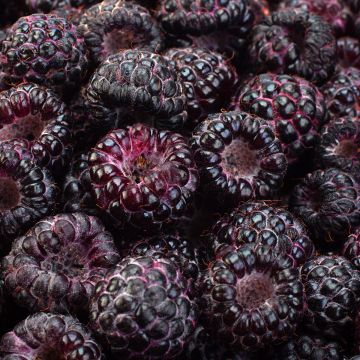
Available in 2 sizes
Available in 1 sizes
Available in 2 sizes
Available in 3 sizes
Available in 1 sizes
Available in 1 sizes
Planting raspberries
Where to plant?
Raspberry bushes are found in warm climates as well as in upland areas, in full sun or partial shade. Raspberry prefers bright, semi-shaded aspects. Plant in loose, humus-bearing, well-drained soil that retains some coolness during summer because rooting is shallow. Calcareous soils cause leaf chlorosis (ideal pH between 6 and 7.5).
When to plant?
Planting is done from November to March for bare-root young plants and continues until June for young plants sold in buckets. Choose virus-free selected young plants rather than suckers gathered from a neighbour.
How to plant and train raspberry bushes?
The training enables the bush to benefit from maximum sun and makes harvest easier. If possible, plan for north–south oriented ranks so both faces receive sunlight, with row spacing of 1.5 m. Plan on a planting that will last 20 to 30 years.
- Stretch a framework of 3 horizontal wires, spaced 40 cm vertically: at 80 cm, 120 cm and 150 cm height. In a small garden, you can group 2 or 3 young plants around a 1.5 m stake.
- Work plot to 30 cm depth.
- Apply compost (2 to 3 barrowfuls per m²) then, if required, add a base fertiliser for fruit trees with magnesia at root level. If soil is calcareous, add turf and later provide a mulch made from acidic materials (pine needles or bark…).
- Plant one young plant every 60 cm to 1 m, keeping collar at correct level.
- Mulch with BRF, for example.
- When buds break in spring, cut back old cane to stimulate emission of suckers on underground stems.
Watch Olivier’s video on Dutch-style training of raspberry bushes.
In a container: place a layer of gravel or clay pebbles at bottom of a deep pot to improve drainage. Fill container with a mix of potting compost, garden soil and compost.
→ More advice in our tutorial How to plant a raspberry hedge?
Raspberry maintenance and pruning
To properly maintain your raspberry bushes :
- Add a layer of manure or compost, once a year in autumn, making sure to cover stubs left by pruning of fruiting canes.
- In spring, supplement with a ‘special berry’ fertiliser. Poor growth is more often due to a virus than to lack of fertiliser. In that case, pull up and burn the plant.
- Water the plant regularly to encourage rooting in the first year after planting. Thereafter, ensure it receives additional water during periods of high heat or extended drought.
- Renew soil mulch (BRF, dead leaves…) to maintain moisture and fertility.
- Watch for the appearance of suckers outside the row and carry out a thinning in June of new shoots when they reach 70 cm, keeping only 10 per metre or per bush after selecting them.
- Once harvest is completely finished, cut exhausted canes back to ground level.
Pruning raspberry bushes
This essentially involves cleaning dead wood and thinning new shoots that will fruit the following year, so that light penetrates sufficiently into the heart of the clump.
- For non-perpetual varieties, remove after harvest or in winter all shoots that have fruited as well as the weakest suckers, keeping only 8 to 10 shoots per linear metre or per clump.
- For perpetual varieties, prune the upper part of canes that have fruited in autumn and cut back completely shoots aged 2 years (often dried out). Select 6 to 8 suckers per linear metre. Alternatively: cut everything back to obtain a single autumn harvest.
To learn more, see this sheet: Pruning raspberries
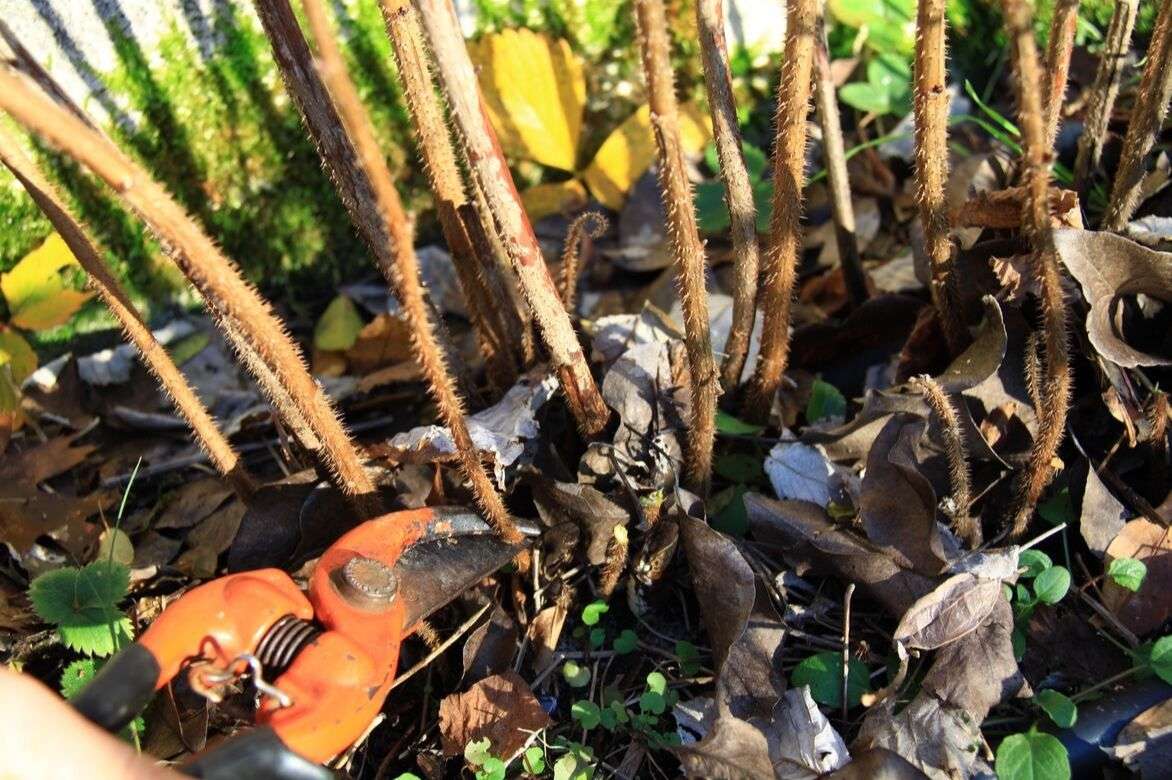
Pruning of non-perpetual raspberry bush in winter
Diseases and pests of raspberry bushes
This undemanding bush is fairly resistant to diseases except when cultural conditions are not optimal, such as a cold spring: raspberry anthracnose, raspberry rust, powdery mildew, grey mould (Botrytis) can occur in rainy periods. To protect plants, it is recommended to feed raspberry bushes with organic fertilisers that promote multiplication of anaerobic bacteria in the soil, which strengthens the soil’s ability to stimulate plant immune systems.
Raspberry bushes can also be attacked by certain pests such as the raspberry worm, the larva of a small beetle that lodges in the fruit, although this does not usually cause significant damage. Hoe and weed the soil in winter to unearth buried cocoons so they are exposed to cold and natural predators. Apply a tansy manure to the plant from late April. The presence of forget-me-nots among raspberry bushes is also said to have a repellent effect.
→ Learn more with our advice sheet Diseases and pests of raspberry bushes
Harvest and storage
Harvest of raspberries
To be harvested, raspberries must be ripe, fully red (or yellow) all over their surface, otherwise they will not have developed their full flavour. But do not wait too long! They must not be crushed when picked. For this, check your raspberry canes every day! This may seem tedious, but rest assured, it is only for a relatively short period that comes to an end in the first weeks of August.
Storing raspberries
- Raspberries can be kept in the vegetable drawer of the fridge for up to 1 week with the firmest varieties. You can also freeze them as you pick, evenly spread out on a tray before gathering them into a freezer bag. They are then eaten in salads, used raw to make cakes or tarts…
- Turning them into jams, jellies, juices, coulis, ice creams or syrups is, of course, essential. Discover our raspberry jam recipe! and How to make homemade raspberry syrup?
Propagating raspberry plants
Given strong tendency of raspberry plants to sucker, it is very easy to separate suckers or divide the clump for less suckering varieties, preferably in autumn.
Dividing a raspberry plant’s stump
Using a well‑sharpened spade, separate suckers with 10 to 20 cm of rootstock.
You can also lift the entire stump and divide it into 2 to 4 sections with strong canes.
Replant them immediately, taking care that raspberry plant’s collar is not buried too deeply.
Water thoroughly before spreading mulch.
Find out more in our tutorial How to propagate raspberry plants?
Uses and associations
Combine several raspberry varieties, (by grouping perpetual varieties together to make pruning easier) on a strip about 1 m wide with suitable trellising to form a hedge. This layout makes maintenance easier and allows harvest over an extended period. This hedge can be used to border a vegetable garden, with a path that makes it easy to remove stray shoots. Raspberry plants can also be added to a country-style planting alongside currant bushes, serviceberries, garden blackberries, dogwoods, wild roses, cranberry or service tree, which produce edible, vitamin-rich fruits. Planting in containers on a balcony is also easy to achieve, especially with dwarf, thornless varieties.
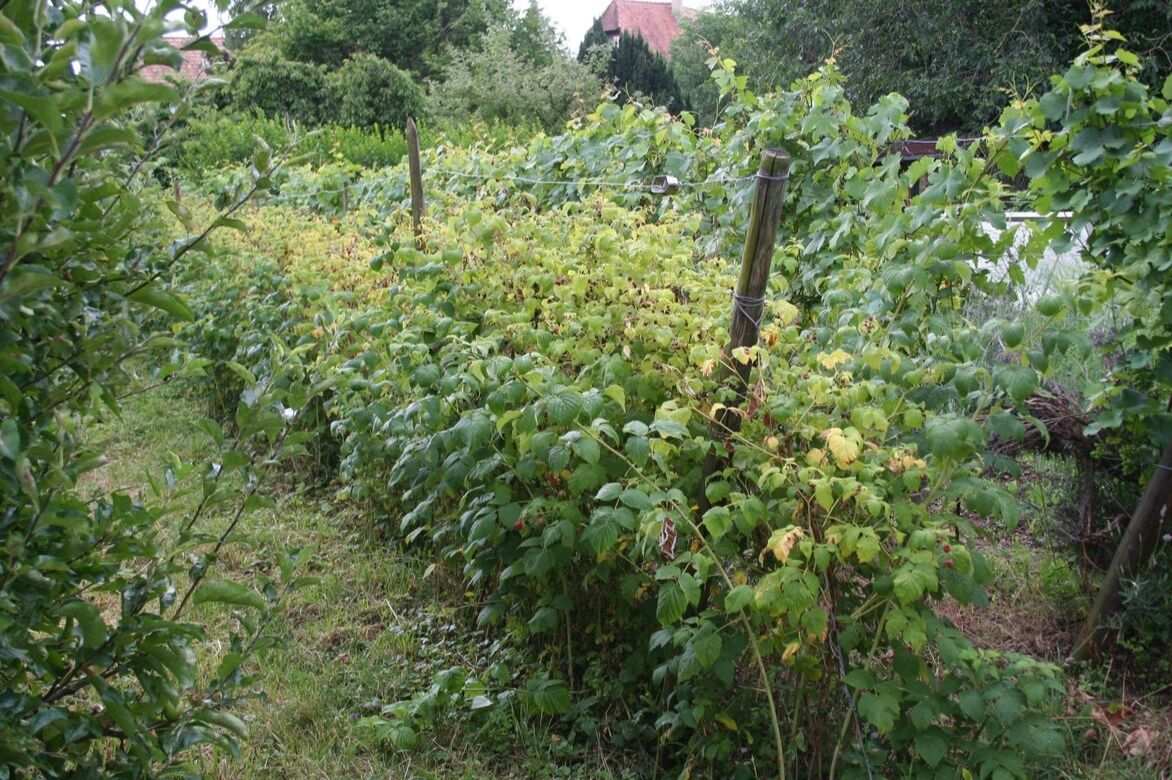
Did you know?
Raspberry cultivation seems to date back to the late Middle Ages. In forests, five to ten years after felling of beech trees in particular, wild raspberries appear on the cleared ground; they then produce fruit for three to four years.
To supply nitrogen to the base of the raspberry plant, sow white or red clover, roughly dug in during spring with a garden fork. Presence of aromatic plants such as savoury, hyssop, clary sage or rue helps repel pests.
Further reading
Discover :
- Our range of raspberry plants: nearly 30 varieties, available to order online and our new soft fruit introductions for 2025
- Article : Raspberry Versailles, a new perpetual variety with very large fruit
- Article : Raspberry Groovy, tasty and decorative
- Advice sheet : Choosing raspberry plants
- Tutorial : How to propagate raspberry plants?
- Tutorial : How to stake raspberry plants properly?
- Tutorial : How to dry raspberry leaves? and Raspberry leaves: benefits, uses and health properties.
- Advice sheet : How to grow a raspberry plant in a pot?
- Advice sheet : 5 red berries for beginners
- Advice sheet : Soft fruit: tips for getting beautiful fruit
- Advice sheet : How to plant bare-root raspberry plants?
- Also discover our top 5 raspberry plants from our trial of 20 varieties.
- Subscribe!
- Contents
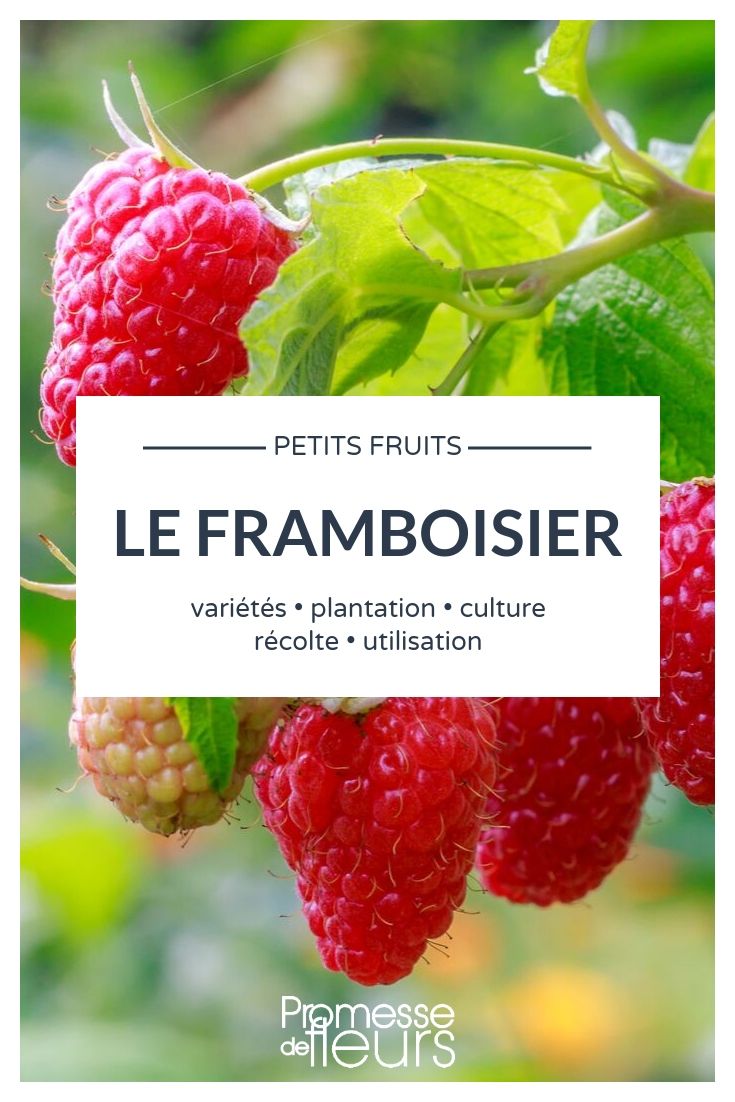































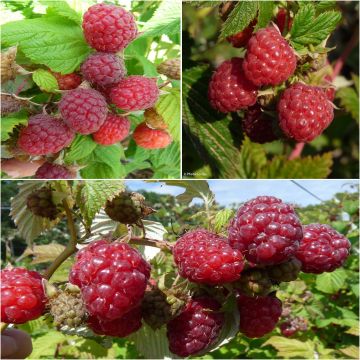
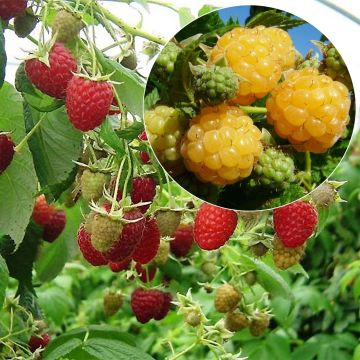

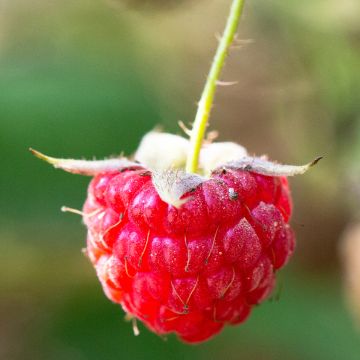
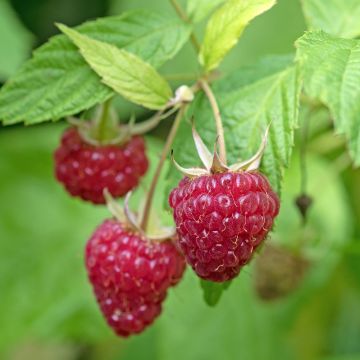
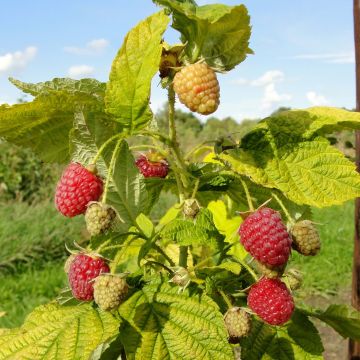
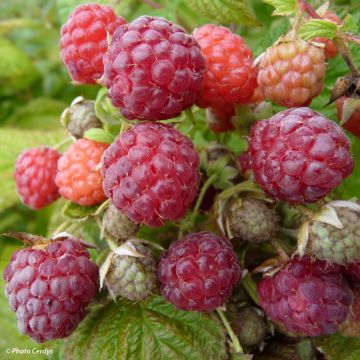
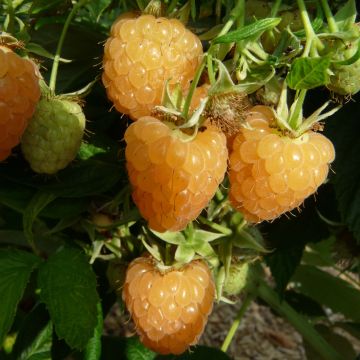
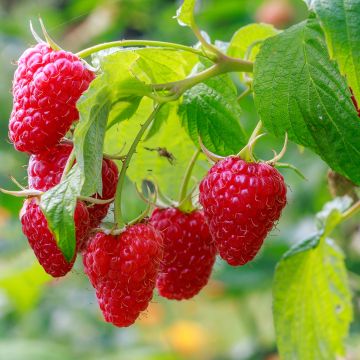
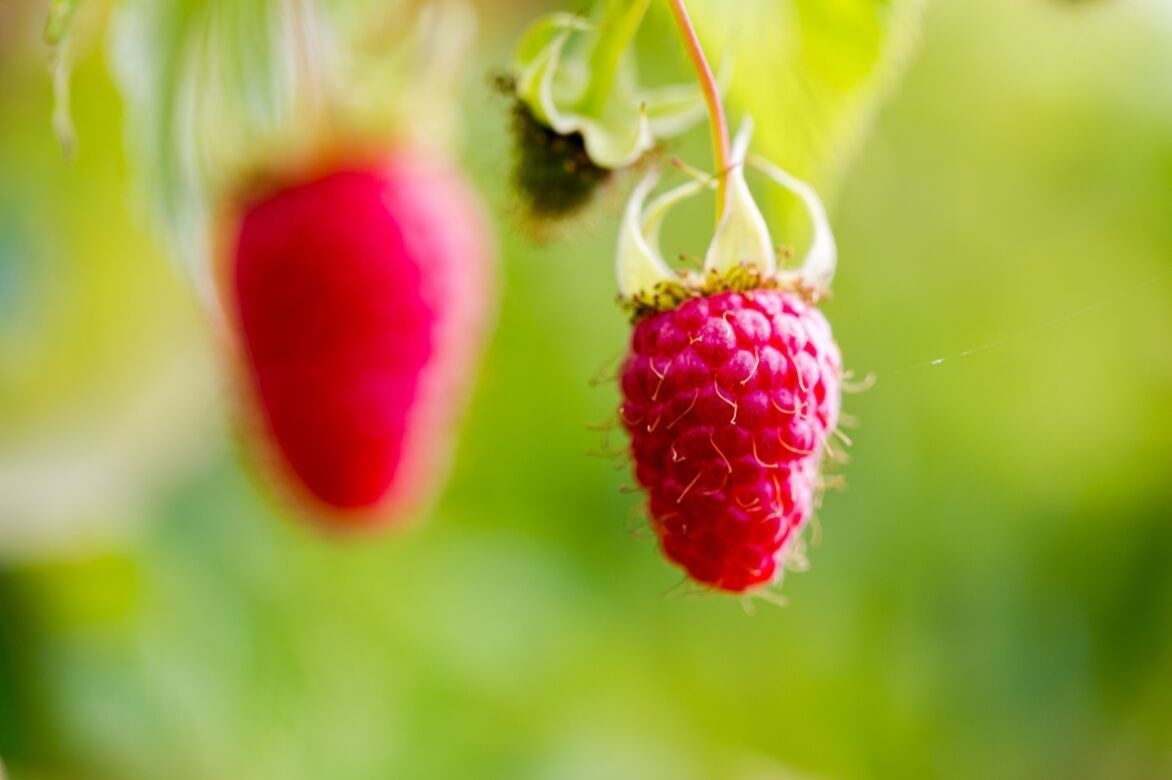
Comments